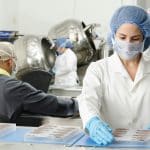Cellular regeneration fuels the body’s natural ability to repair and renew itself, playing a key role in aging gracefully. By understanding how cells regenerate—from skin healing to liver restoration—we unlock new paths to extend vitality and delay age-related decline. Exploring these mechanisms reveals promising medical advances that transform how we approach health and longevity at the cellular level.
Understanding Cellular Regeneration: Mechanisms, Significance, and Health Applications
This page explains it in detail: https://baranovamonaco.com/.
Dans le meme genre : Can Controlled Breathing Techniques Lower Heart Rate in Anxiety Attacks?
Cellular regeneration is nature’s way of restoring form and function—whether that means healing a paper cut in humans, regrowing a starfish arm, or replacing entire tissues in salamanders. Defined as the renewal and restoration of damaged or lost tissues, this process exists to varying degrees in all living organisms, from bacteria to mammals. Cellular regeneration can be complete, recreating the original structure, or incomplete, resulting in scar tissue instead of perfect repair.
At the core of the regeneration process are two key biological phases. First, cells in the wounded tissue migrate and form the wound epithelium, creating an initial protective barrier. Next comes blastema formation—a group of stem-like cells gathers beneath the new epithelium, primed to redevelop lost structures. Throughout these phases, cellular signaling—guided by molecular triggers, oxidative stress responses, and growth factors—ensures tissues heal or renew without threatening the body’s integrity.
Lire également : Strategies to manage anxiety and prevent panic attacks
The importance of cellular regeneration is profound. It underpins natural healing, ongoing tissue maintenance, and our fight against aging. Age, disease, and environmental factors may limit regenerative potential, but understanding these mechanisms could ultimately inspire new regenerative therapies and health strategies.
Biological Pathways, Model Organisms, and Human Regenerative Capacity
Regeneration in model organisms: planarians, hydra, salamanders
Planarians stand out for their remarkable ability to regenerate a complete body from just a tiny fragment, driven by pluripotent neoblast stem cells. Even a fragment containing a minimal number of cells can reform a fully functional organism. Hydra exhibit continuous regeneration through morphallaxis, where existing tissue remodels without new cell proliferation, making them unique among invertebrates. Salamanders and newts, the champions among vertebrates, regenerate entire limbs, tails, and even eyes by forming a cellular mass called the blastema. This collection of dedifferentiated, stem-like cells responds to signals at the wound site and reactivates key developmental genes. The process is consistent and time-bound, with limb regeneration typically completing within months.
Cellular and molecular mechanisms: stem cells, signaling pathways, and blastema formation
Regenerative cycles universally depend on stem cell activation, wound epidermis formation, and the orchestration of complex molecular signals. Apoptosis—a controlled cell death mechanism—triggers the release of growth factors such as Wnt and BMP, which stimulate cell proliferation in the blastema. Bioelectric signals and microRNAs also help coordinate the cellular repair cycle, ensuring differentiation produces accurate tissue structures. The interplay between dedifferentiation, proliferation, and these pathways reveals why some species regenerate so efficiently.
Human physiological vs. reparative regeneration: liver, skin, blood, and neurogenesis
In humans, physiological regeneration occurs constantly in tissues like the skin, liver, and blood, supported by resident stem cell niches. The liver can regrow substantial mass after injury, and skin renews itself through basal cell proliferation. However, reparative regeneration—replacing complex structures such as limbs—is limited. Notable exceptions exist, like fingertip regrowth in children and partial neurogenesis in the hippocampus. Cellular repair in humans often results in scarring rather than full tissue restoration, reflecting differences in stem cell activity and regenerative signaling compared to model organisms.
Advances in Regenerative Medicine, Influencing Factors, and Therapeutic Innovations
Latest Research: Regenerative Medicine, Cell Therapies, and Gene Interventions
Recent breakthroughs in regenerative medicine have enabled precise strategies to restore damaged tissues and organs. Precision cell therapies now use stem cell activation and targeted gene intervention—such as CRISPR-based genome editing—to trigger new tissue formation in areas of injury. Clinical applications increasingly involve tissue repair mechanisms harnessing autologous stem cells and the delivery of bioactive molecules, while gene therapy for tissue repair offers hope for conditions previously viewed as irreversible. These innovations aim to optimize the body’s cell renewal process, minimize scarring, and accelerate healing.
Role of Diet, Fasting, and Supplementation in Supporting Cellular Repair
Nutrition strongly influences tissue repair and cellular restoration. Research indicates that dietary choices rich in certain amino acids, antioxidants, and growth factors support cell proliferation signals and renewal. Intermittent fasting and caloric restriction boost autophagy—the cell’s natural clean-up process—promoting more effective cellular regeneration and longevity. Modern nutritional protocols are also exploring supplements for tissue recovery, which may provide additional molecular support for cell growth, especially during stress or aging.
Challenges, Ethics, and Future Prospects in Human Tissue Regeneration
Despite enormous progress, regenerative medicine faces significant challenges. Issues include the safety and efficacy of stem cell therapies, potential immune rejection, and the ethical dilemmas surrounding genetic manipulation and biotechnological enhancements. Attention is turning to the balance between maximal tissue regeneration and the risk of uncontrolled cell growth. Looking forward, emerging research on clinical applications and the development of regenerative medicine protocols continues to shape a future with greater potential for human healing.











